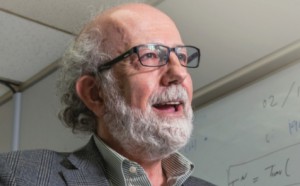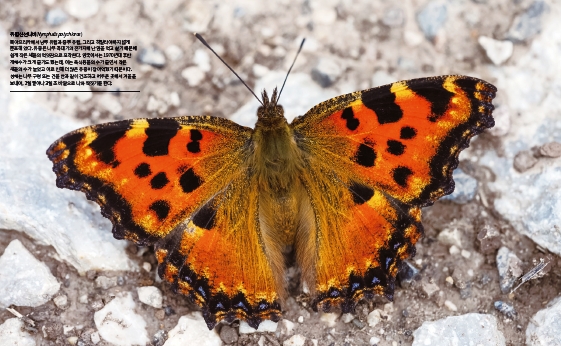희귀한 말의 한 종류, 어쩌면 가장 진귀한 일종이 이제 25년간 자취를 감추었던 고향산천으로 복귀하게 된다.
이 말은 1870년대에 러시아 제국하의 폴란드영토출신의 한 탐험가가 서몽고 지역에서 한마리를 쏘아죽였을때부터 서구 박물학자들에 의해 주목받게 됐다. 그 탐험가는 죽은 말의 가죽과 뼈를 성베드로 박물관으로 가져왔는데 바로 거기에서 박물학자들은 그 말이 보통말과 같지 않은 종자임을 발견했다.
탐험가의 이름이 니콜라이 펄저왈스키였던 까닭에 그 말 또한 펄저왈스키의 말이라 부른다. 우리가 익숙해 있는 평범한 말, 즉 수레를 끌고 경마장에서 뛰는 말들은 과학용어로 "에쿠우스 카발루스"(라틴어로 "말의 말")인데 이 신종은 "에쿠우스 펄저왈스키"로 명명했다.
두 말들이 서로 어떻게 다르냐고? 큰 차이는 없다. 펄저왈스키 말을 보면 누구든 우둔하고 회갈색빛의 거친 털과 빈약한 갈기를 가진 조랑말 정도로 판단할 뿐이다. 그러나 상세히 비교해 보노라면 차이점이 있는데 그 중 가장 특이한 점은 에쿠우스 펄저왈스키의 세포속엔 평범한 에쿠우스 카발루스보다 유전 염색체의 수가 두개나 더 많다는 것이다.
펄저왈스키 말은 몽고지역에 정착하였으며 고대엔 그곳에서 넓게 번식하였을 가능성도 높으나 현대에 접어들어 영구적으로 절멸될 위기에 놓일 정도로 아주 적은 무리의 수로 감소했다. 그러다가 결국 한때 번창했던 펄저왈스키 말은 그 마지막 한마리가 1960년대에 야생환경에서 사라짐으로써 멸종되고 말았다.
그러나 그 멸종은 완전하거나 최종적이지는 않았다. 여러마리의 펄저왈스키 말들이 사로잡혀 동물원에 갇혔는데, 그 말들은 보호구역내에서 번식하는데 아무런 어려움이 없어 보였다. 그 결과, 이젠 자연환경하에서는 한마리도 남아있지 않지만 약 1천여마리가 여러 동물원에서 사육되며 번성하고 있다.
뜻있는 사람들은 이제 이 희귀한 말들을 몽고로 이동시켜 자연속에 다시 정착시키고자 모금 활동에 주력하고 있다.
당신은 몽고로 이동시키는 것이 왜 필요하냐고 궁금해 할는지 모른다. 몽고의 환경이 펄저왈스키 말들에게 특별히 적합하고 다른 곳에서는 번성할 수 없느냐고 말이다. 만약 그렇다면 평범한 말들은 세계전역에서 문제없이 잘 살고 있다는 점이 이상스럽게 된다. 그러나 사실인즉, 평범한 말들은 지역에 무관하게 번성하지만 펄저왈스키말은 그렇게 못하는 이유가 뚜렷이 존재하는 까닭을 알아야 한다.
이러한 사유를 이해하기 위하여 동물의 종이 어떻게 분리되는가를 생각해 보자. 평범한 경우 어느 주어진 종은 같은 종의 다른 구성원들을 탄생시키며 그 종족의 특성을 보존한다. 물론 그 특성에 조그마한 변화가 발생하여 돌연변이라는 것이 나타나기 마련이고 따라서 같은 종의 생물이더라도 완벽하게 같을 수는 없다. 그러나 이종(異種)끼리의 교배는 돌연변이들을 뒤섞어서 그 종 전역에 퍼지도록 한다.
그러나 만약 특정한 종의 두 무리가 서로 분리되고 또한 그 분리가 오랜기간동안에 걸쳐 유지된다면 각 무리는 그 나름대로의 돌연변이들을 만들어낸다. 만약 그 분리기간이 각 무리내에서 다양하고 많은 돌연변이들을 낳도록 오래 지속되면 그 결과는 서로 다른 종으로 이어지는 것이다.
따라서 모든 낙타의 조상은 공통적으로 하나이지만 중동의 낙타와 몽고의 낙타는 서로 유전학적으로나 지리적으로나 구별되고 있다. 둘다 틀림없는 낙타인데 "아라비아 낙타"인 전자는 봉이 하나이고 후자인 "박트리안 낙타"는 쌍봉에 다리가 짧고 털은 더 길다. 서로 다른 종족인 것이다. 남미의 라마는 더욱 오래 분리되어 있어 얼마나 변했는지 낙타라고 봐 줄 수도 없을 정도이지만 친척임에는 분명하다.
마찬가지로 코끼리도 인도산과 아프리카산의 두종으로 확연히 구분된다. 또한 맥(맥)과 같은 포유동물은 코끼리와 한 조상으로부터 내려왔지만 그러한 관계가 쉽게 이해되지 않을 정도로 변해버렸다.
두종이 분리되면서 그들의 상관관계는 서서히 일련의 과정을 거친다. 그러다가 결국 서로 달라져 성공적인 교배가 어렵게 되고, 아니 그리하고 싶은 충동조차 못 느끼게 되어버린다. 그러한 차이가 두드러지기 전에 두 종의 교배는 있을 수 있다손 치더라도 수정이 불가능한 새끼를 낳음으로써 계속하여 그 혼종이 이어질 수 없게 된다. 그래서 말과 당나귀는 교배할 수 있지만 무수정의 노새와 버새를 낳게 되는 것이다.
만일 두 종이 가까우면 교배도 하고 새끼도 낳을 수 있는 혼종을 낳는다. 이 경우 한 종의 수가 다른 종의 수보다 월등히 많으면 수가 적은 종의 동물들은 수가 큰 종의 무리족으로 스며들며 독립된 종의 동물형태는 사라져버리게 된다. 수가 많은 종이 별 변화없이 유전학적 혼합체를 흡수하는 것이다.
두 종의 말에 얽힌 사례는 바로 이러한 경우다. 만약 펄저왈스키말의 무리가 보통 말들에 근접하면 두종의 말 사이에 교배가 일어나고 펄저왈스키 말은 결국은 멸종되어 버릴 것이다.
이 때문에 펄저왈스키 말을 평범한 말들이 살지 않고 또한 유입될 수도 없는 몽고 지역으로 이동시키려는 것이다. 이 말이 독특한 종으로 자연에서 보존될 수 있도록 말이다.
A rare variety of horse- in fact, the rarest- is going to be restored to its own indigenous wilderness, where it has not been seen for a quarter of a century.
This horse first came to the attention of western naturalists when an explorer from the Polish province of the Russian Empire shot one in western Mongolia in the 1870s. He brought back the skin and bones to the St. Petersburg Museum, and there, naturalists found that it was not exactly an ordinary horse but was a separate species.
Since the explorer's name was Nikolai Przewalski (pronounced "per-zhe-WAHL-skee"), the animal was named Przewalski's horse. Whereas the ordinary horse that we're used to - the horse that pulls our wagons and runs our races - has the scientific name of "Equus caballus"(Latin for "horse horse"), the new species was named "Equus przewalski."
What is the difference between the two horses? Not much. Anyone looking at a Przewalski horse would immediately judge it to be a kind of pony with a dull, grayish-brown color, with coarse hair and a skimpy mane. Going into the minutiae, however, it has its differences - perhaps the most notable is that each cell in Equus p. has two chromosomes more than is present in ordinary humdrum Equus c.
Przewalksi's horse made its home in the Monglian region, and in ancient times it may have been widespread there, but in modern times, it had been reduced in numbers to a small herd in Perpetual danger of extinction. And, indeed, that extinction came, after a fashion, for in the 11960s the last Przewalski horse was seen in the wild.
Yet the extinction was not entire and ultimate. A number of Przewalski horse had been captured and placed in zoos and they seemed to have no difficulty breeding in captivity. The result is that now, with not one horse of the species left in the wild, about a thousand are flourishing in zoos.
A group of interested people is now trying to raise money to transfer some of these odd horses to Mongolia and restore them to the wild.
You might wonder why it is necessary to place them in Mongolia. Is the Mongolian environment particularly suitable to the Przewalski horse and will it flourish nowhere else? That would be strange since ordinary horses live well throughout the world. But it's precisely because ordinary horses do that Przewalski horses can't.
To understand this, consider how species separate. Ordinarily, a particular species gives birth to other members of the species and retains its identity. Of course, there are always mutations, small changes in characteristics that take place randomly, so that no two members of the species are entirely alike. However, interbreeding mixes up these mutations and spreads them throughout the species.
If, however, two populations of particular species are separated and stay separated for a long period of time, each population develops mutations of its own. If the period of separation is long enough so many mutations of different sorts take place in each population, then the two become different species.
Thus, camels all descend from a common ancestor, but the camels of the Middle East and the camels of Mongolia have drifted apart - genetically and geographically. They are still both unmistakably camels, but the former, the "Arabian camel" has one hump, while the latter, the "Bactrian camel" has two humps, shorter legs and longer hair. They are different species. The llama of South America, separated much longer, has changed so much that it's not even recognizable as a camel, but it is a relative.
In the same way, there are two distinct species of elephant, the Indian and the African. And there are also mammals, such as the tapirs, that are descended from a common ancestor with the elephants, but has so changed that the relationship is not easily apparent.
As two species separate, they go through a gradual series of interrelationships. Eventually, they are so different that they cannot interbreed
successfully and, in fact, have no impulse to do so. However, before such a stage of difference is reached, two species might still interbreed, but give birth to infertile young that cannot continue the mixed species. Thus, horses and donkeys can interbreed, but give rise to mules and hinnies, which are infertile.
If species are still closer, they can interbreed and produce fertile mixed breeds. When this happens, and when one of the close pair of species is far smaller in number than the other, than the smaller numbermelts into the larger, and it is gone as an independent animal. the species of larger number can take the genetic admixture without substantial change.
This is the case of the two horses. If a herd of Przewalski horses were within reach of ordinary horses, there would be interbreeding and the Przewalski horses would eventually vanish.
For that reason, the Przewalski horses will be placed in a Mongolian area where ordinary horses are not found and where they will not be permitted to enter. In that way, this different horse may be preserved in the wild as a unique species.
이 기사의 내용이 궁금하신가요?
기사 전문을 보시려면500(500원)이 필요합니다.
1991년 04월 과학동아 정보
🎓️ 진로 추천
- 생명과학·생명공학
- 환경학·환경공학
- 역사·고고학

















